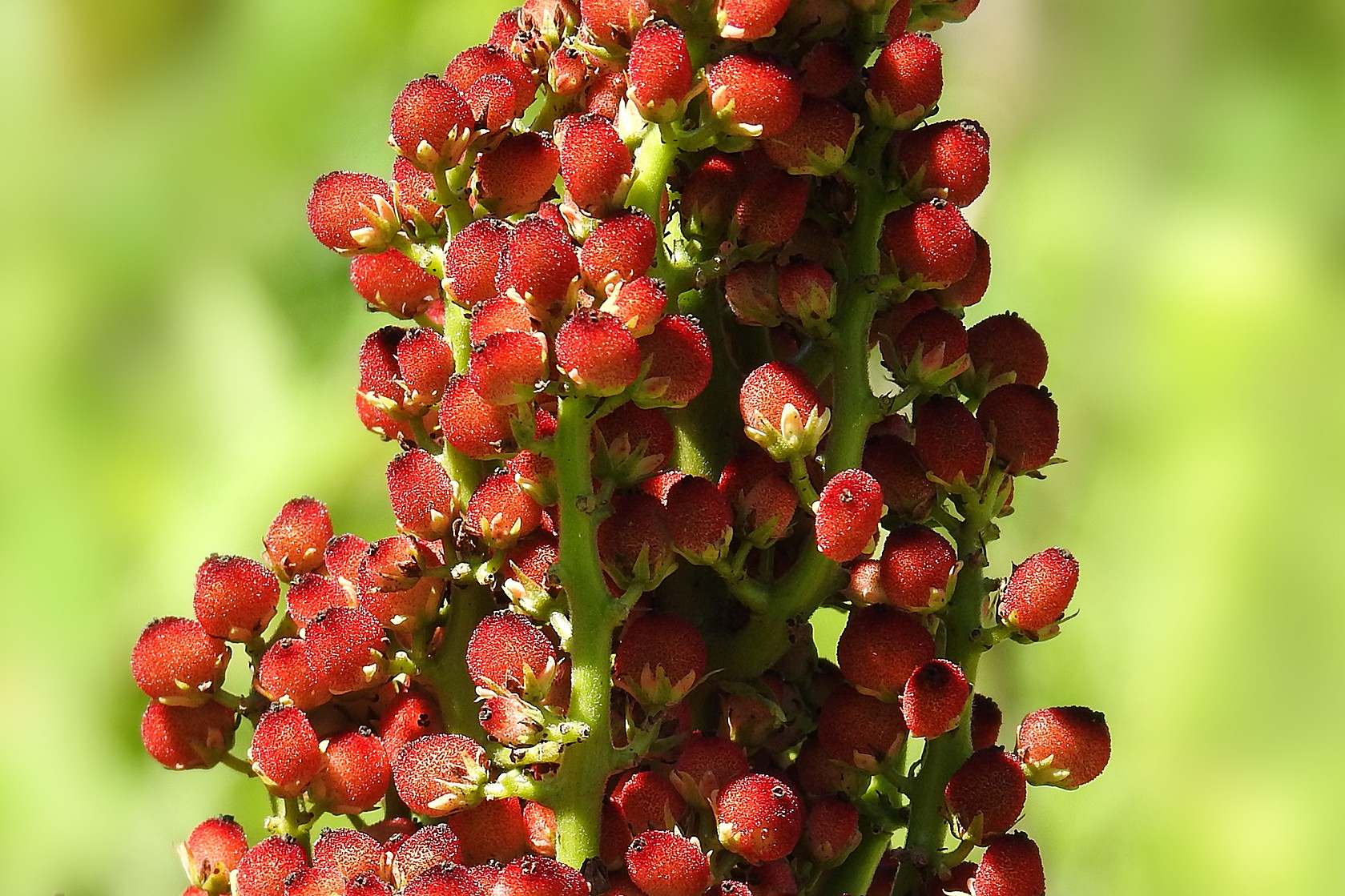
Sumac is a spice that often flies under the radar, yet it packs a punch in the culinary world. But what exactly is sumac? Sumac is a tangy, lemony spice made from the dried and ground berries of the wild sumac flower. This vibrant red powder is a staple in Middle Eastern and Mediterranean cuisine, adding a zesty kick to dishes. It's not just about flavor, though. Sumac boasts impressive health benefits, including anti-inflammatory properties and a rich supply of antioxidants. Whether you're a seasoned chef or a curious foodie, learning about sumac can elevate your cooking game and boost your health. Ready to spice things up? Let's dive into 27 fascinating facts about sumac!
What is Sumac?
Sumac, a spice made from the dried and ground berries of the wild sumac flower, has been used for centuries in Middle Eastern and Mediterranean cuisines. Its tangy, lemony flavor adds a unique zest to dishes. Let's dive into some fascinating facts about this versatile spice.
-
Sumac is derived from the Arabic word "summaq," which means "dark red."
-
The spice comes from the Rhus genus of flowering plants, which includes around 35 species.
-
Sumac berries are harvested in late summer and early fall when they turn a deep red color.
-
The spice has been used since ancient times, dating back to the Roman Empire.
-
Sumac was traditionally used as a souring agent before lemons were introduced to Europe.
Health Benefits of Sumac
Sumac isn't just a flavorful addition to your meals; it also boasts numerous health benefits. Here are some reasons why you might want to include sumac in your diet.
-
Rich in antioxidants, sumac helps combat oxidative stress and inflammation.
-
Sumac contains high levels of vitamin C, which supports immune function and skin health.
-
The spice has antimicrobial properties, making it useful for fighting off infections.
-
Sumac may help regulate blood sugar levels, making it beneficial for people with diabetes.
-
It has been shown to lower cholesterol levels, promoting heart health.
Culinary Uses of Sumac
Sumac's tangy flavor makes it a popular ingredient in various dishes. Here are some ways to incorporate this spice into your cooking.
-
Sumac is a key ingredient in the Middle Eastern spice blend za'atar.
-
Sprinkle sumac on salads for a burst of citrusy flavor.
-
Use sumac as a rub for meats, especially lamb and chicken.
-
Add sumac to marinades for an extra layer of flavor.
-
Mix sumac with yogurt to create a tangy dip or sauce.
Sumac in Traditional Medicine
Throughout history, sumac has been used in traditional medicine for its healing properties. Let's explore some of these traditional uses.
-
Ancient Greeks used sumac to treat digestive issues and stomach ailments.
-
Native Americans used sumac to make a medicinal tea for sore throats and colds.
-
Sumac was used in traditional Persian medicine to reduce fever and inflammation.
-
The spice has been used to treat skin conditions like eczema and psoriasis.
-
Sumac was believed to have diuretic properties, helping to flush out toxins from the body.
Growing and Harvesting Sumac
Interested in growing your own sumac? Here are some facts about cultivating and harvesting this unique plant.
-
Sumac plants thrive in well-drained soil and full sunlight.
-
The plants are drought-tolerant, making them suitable for dry climates.
-
Sumac can be grown from seeds or cuttings, with seeds taking longer to mature.
-
Harvest the berries when they turn a deep red color, usually in late summer or early fall.
-
Dry the harvested berries in a well-ventilated area before grinding them into a spice.
Fun Facts About Sumac
Sumac has some interesting trivia that might surprise you. Here are a few fun facts to round out our list.
-
Sumac is often used as a natural dye for fabrics, producing a range of colors from yellow to red.
-
The spice is sometimes used in cosmetics for its antioxidant and anti-inflammatory properties.
Sumac: A Spice Worth Knowing
Sumac isn't just another spice on the shelf. Its tangy flavor and vibrant color make it a standout in any dish. From Middle Eastern cuisine to modern kitchens, sumac has found its place. It's not just about taste; sumac is packed with antioxidants and anti-inflammatory properties. This spice can boost your health while adding a unique twist to your meals.
Whether you're sprinkling it on salads, mixing it into marinades, or using it as a rub for meats, sumac offers versatility. It's a simple way to elevate your cooking without much effort. Plus, it's a great conversation starter for those who love to explore new flavors.
Next time you're at the store, grab some sumac. Experiment with it. You might just find your new favorite spice. Sumac is more than a seasoning; it's a culinary adventure waiting to happen.
Was this page helpful?
Our commitment to delivering trustworthy and engaging content is at the heart of what we do. Each fact on our site is contributed by real users like you, bringing a wealth of diverse insights and information. To ensure the highest standards of accuracy and reliability, our dedicated editors meticulously review each submission. This process guarantees that the facts we share are not only fascinating but also credible. Trust in our commitment to quality and authenticity as you explore and learn with us.
